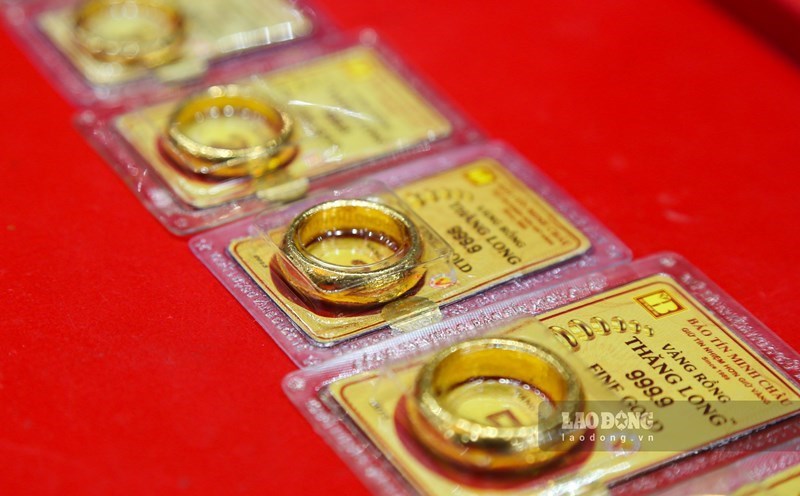The pinnacle of sculpture during the Ly Dynasty
The exhibition takes place from October 25 to November 15, 2025 at Hung Yen Provincial Museum ( facility 1), introducing artifacts that are versions of typical Buddhist sculptures. The precious artifacts that have been preserved show that Vietnamese fine arts has strongly promoted the long tradition of creativity of the people on large-scale and skillful works of art. Notable among them is the statue of Buddha A Di Da, the 2.7m high stone Buddha Tich pagoda is a masterpiece of sculpture of this period and a treasure trove of Vietnamese Buddhist art.
The statue is delicate, the body seems to stretch, thinning while the blocks are still full and round. The noble features are clearly shown: Scalp hair, high pointed head, long ears, three-pointed high neck; Look down, straight nose bridge, bright smile mouth. The way to create a tight-fitting shirt with flowing curves covering both legs is a "westerly" style, influenced by the artistic style of creating Buddha statues during the Tang Dynasty.
The statue consists of 3 parts: At the top is a lotus platform, followed by a lion shape (separated during the renovation period of the Le Dynasty, currently preserved at the National Museum of History) and finally a level platform carved with dragons and water waves. The art of carving and decorating the A Di Da statue depicts the sophisticated decoration characteristics, covering the subject's pedestal, affected by the "fear of space" mentality in Indian carving art.
The A Di Da Buddha statue is the largest and most beautiful stone Buddha statue of the Ly Dynasty in Vietnam known today. The statues and decorative patterns on the statues reflect indigenous art and prove the origin of Buddhist art in particular and independent art in Dai Viet in general. With sophisticated and soft lines, meticulousness and liveliness, this statue is a unique work of art, a message that the Ly Dynasty left for generations to come.
A unique work in Buddhist art
If the A Di Da Buddha statue reflects the outstanding beauty of Ly Dynasty art, the Quan Am statue of the Thousands of Eyes and Hands of But Thap Pagoda (Bac Ninh) - a unique work of the 17th century is the pinnacle of religious art of the Later Le Dynasty.
The statue is a combination of the form of Quan Am Thien Nhan Lang (knowing the thousand eyes) with Thap Nhat Quan Am (Quan Am has 11 faces). The spirit of Confucius, because of his wish to save animals, appeared in thousands of hands and eyes. In addition, in the Mat Tong, the reformation of the cross of the cross of Quan Am to pray for disease control and crime control.
The transformation of a thousand eyes and thousands of hands is expressed in 42 large arms, arms to be ceiling-edged, hands in a committed and meditation position, the bracelets of the secondary arms form a large circle placed behind the statue (including 789 arms) in each hand with 1 eye.
The special thing about the Quan Am statue of But Thap Pagoda is that the way of expressing the transformation of "one-faced" is not according to the standards as mentioned in the book. Not showing angry, content-going faces, the 11 faces of Quan Am all show a sympathetic, calm face. The statue has 3 main sides, on the top of the bust, there are 3 first floors, 2 floors below each top 3 floors, the 3rd floor has 2 ends and at the top is the statue of Buddha A Di Da - symbolizing the fact that the Buddha Quan Am has truly witnessed the Buddha's fruit.
The Buddha sitting on the lotus throne was supported by the Longxes and 4 Da Xoa gods. The image of Long Than crossing Nam Hai tank is vividly expressed. On the statue is engraved a row of Chinese characters recording the year of the statue: "Tuyen Thuan Binh Than, thu mua cong tuong danh". The right side is carved with two incense tablets, a double bill, and in the middle is the words "Nam Dong Giao Tho Nam Duong Tien Sinh Phung Phung". The two lines of the text state the date of the statue's carving and the person carving the statue (Truong Tien Sinh was completed on a good day in the fall of Binh Than 1656).
This is considered a unique work in Buddhist art in particular and fine arts in general of Vietnam in the 17th century.
According to Mr. Vu Nguyen Ly - Deputy Director of Hung Yen Provincial Museum, the display of the Quan Am But Thap statue in this exhibition has a special meaning: "The statue is a vivid testament to the creativity of Vietnamese artisans and the worship of Buddhism among the people. Each carved detail expresses artistic thinking, belief and Vietnamese soul, contributing to honoring the value of national spiritual heritage.
Mr. Ly added that this exhibition is an opportunity for the public to get closer to the highest values of Buddhist sculpture - an inseparable part of the flow of Vietnamese culture.
Through introducing accurately restored versions, we hope to spread the beauty and spirit of national treasures to a wide range of viewers, especially the younger generation - Mr. Ly said.
Mr. Ly emphasized that Hung Yen Provincial Museum considers this not only an exhibition activity, but also a journey to connect heritage and contemporary life. Each artifact is a story of faith, intelligence and humanity. Preserving heritage is also preserving the origin of the nation.











